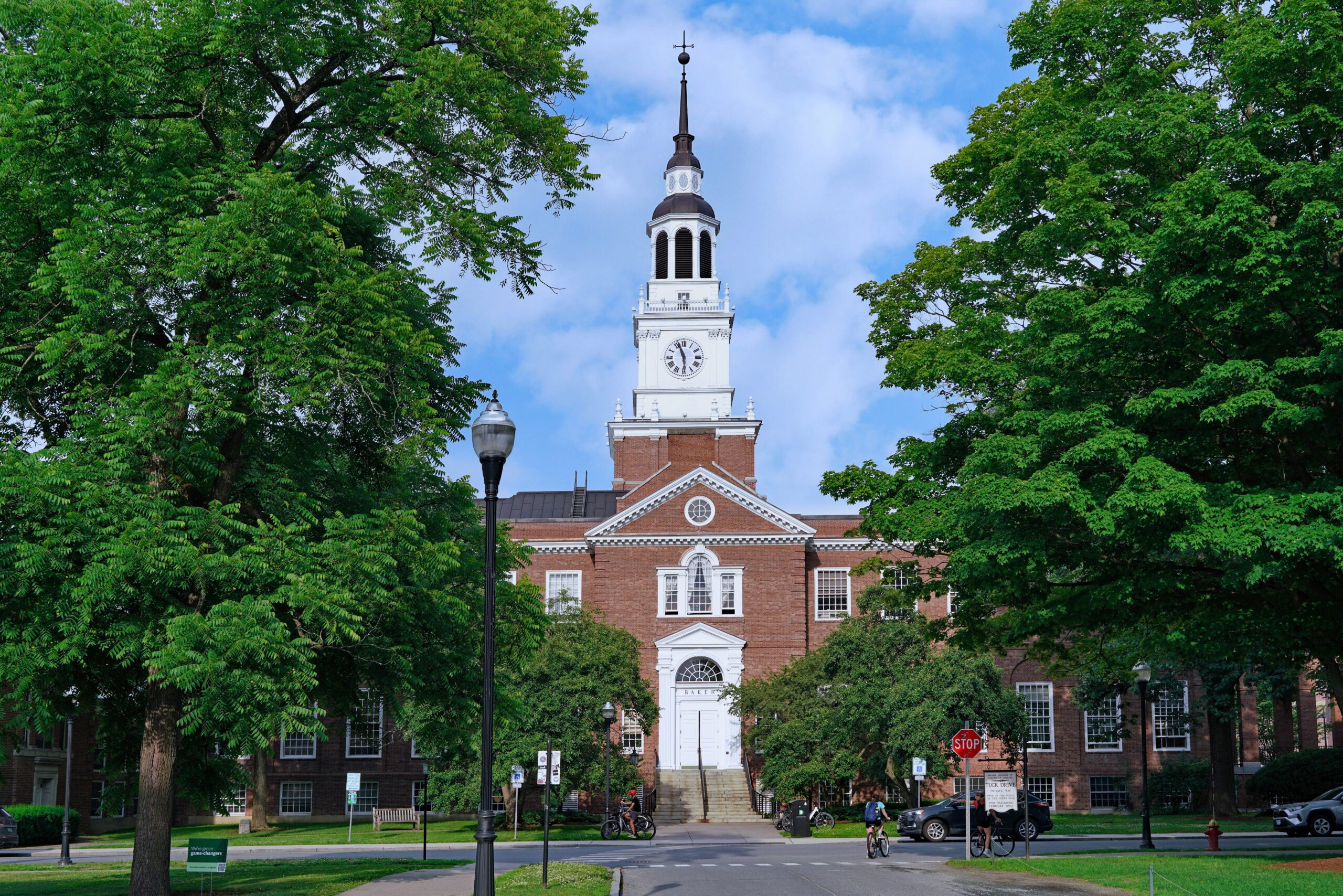Jason Weber was particularly attuned to the quiet student who sat in the very back row of the class he was leading. The student didn’t speak out, and rarely engaged. He was, as Weber recalls, very, very, shy. But this classroom wasn’t meant to be a spectator-sport environment. It was Texas Tech’s inaugural cohort of its new leader development program, designed to help students build confidence and purpose through active participation. Weber didn’t stop trying to draw him out, and slowly a relationship formed.
About three-quarters through the semester, the student, Octavio Garza IV, approached him with surprising news.
“He said, ‘I just want to let you know that when I started this program, I didn’t really want to be here. But I just thought, maybe this would be good for me,’” recalls Weber, who in addition to being facilitator of the leader development program, is Associate Vice Chancellor-Leader and Culture Development of the Texas Tech University System. Octavio told him that his experience in this program made him decide to stick his neck out and apply for a student ambassador position, and that he had been selected.
The following year, Weber would see Octavio in public roles around campus, staffing tables and handing out root-beer floats to new students. “This is someone who engaged with students doing things I never thought he would do,” Weber says. “Once I saw him in the hall, and I pulled him into my classroom to speak to a group about his experience with the program. He ended up standing in front of a whole room of people talking for five minutes on his experience and how beneficial it was. He had just completely come out of his shell.”
Octavio has since graduated, and instead of following a career in law enforcement as planned, he decided to pursue a master’s degree in education while working in the admissions office for Angelo State University, part of the Texas Tech University system. “The school and that program had a huge impact on me,” he says, “and now I’d like to work in a career where I can help students make choices that will change their education, and their life.”
Texas Tech’s program for juniors, Lead Like A Ram, is now in its third year, and has become so popular that the two cohorts fill quickly. Participants meet twice a month for a two-hour learning session, with both groups overlapping over a shared dinner. The program is being piloted in different forms at other locations within the Texas Tech University System, and Weber hopes 2026 will see the launch of a version for graduate students in medicine.
Texas Tech is one of many institutions taking seriously the question, What kind of leaders does the world of tomorrow need, and how do we cultivate them? A 2021 study published by the Harvard Business School identified the top 10 leadership skills in demand for the future of work, including inclusive leadership, engaging and inspiring leadership, and leadership without formal authority. Meanwhile, a 2023 study by the National Society of Leadership and Success concluded that students today aren’t developing three essential skills most needed for the modern workplace: communication, decision-making, and leadership.
Academics and administrators interested in developing leaders through higher education have a new ally in the Carnegie Foundation for the Advancement of Teaching. Known for a broad range of transformative advancements in education, the foundation expanded its classifications of institutions in higher education to include programs focusing on Leadership for Public Purpose. The foundation defines its interest in university leadership development in this way: “Effective leadership for public purpose transcends functional or instrumental leadership (i.e., personal career or political gain; or narrow business or organization outcomes), in pursuit of collective public good, including justice, equity, diversity, and liberty.”
This year marks the first cycle of the evaluations for the Carnegie Elective Classification for Leadership for Public Purpose, with 25 U.S. institutions of higher education held up as pioneers on the national landscape of leadership development, including Rice University.
In 2015, renown venture capitalists and tech executives John and Ann Doerr—both Rice alums with bachelor’s and master’s degrees in electrical engineering—decided to make a major investment in leadership at their alma mater. Earlier contributions established their investment in engineering leadership, and they wanted to make it available to students throughout the university.
The Doerr Institute for New Leaders is the result of their $50 million gift designed to empower students with the skills, training, and confidence to make a true difference in the world, through a combination of hands-on, real-world experience, and guidance from personal coaches. The institute has a wide range of programming for Rice students at no added charge: Using a combination of classroom-based learning, excursions to watch leaders in action, one-on-one leadership coaching, and group coaching, the university practices its belief that leaders aren’t born or made, they are grown.
The focus on the word leader over leadership at Rice and many other schools is a conscious one, says Ryan Brown, Managing Director for Measurement at the institute.
“Leader development is about developing the person as a leader and their capacity as a leader, their identity as a leader. When you say leadership development, you could mean the dynamic between a leader and a follower. You could mean that broader social system in place within which leadership is happening and potential leaders are being identified. But you’re getting into more organizational or system dynamics, and that’s not what we do,” he said. “Because we don’t operate within an organization where that leadership is happening in a corporate structure, for example, elevating a person. What we’re focusing on is developing each student as a leader, then we actually want our leaders to leave, want them to graduate and go out into the world and then lead there.”
“If we only helped students to see themselves as leaders, but we had actually turned them into narcissists, then that would not be a good outcome.”
The common set of measures Doerr Institute uses in its coaching program includes leader identity—the extent to which you see yourself as a leader, feel capable of leading, competent to lead, and willing to lead. “We also include sense of purpose, self-awareness, a couple of measures of psychological wellbeing, and an intellectual humility measure, which I really like,” Brown said. Contrary to what some might think, leadership is not about decisiveness and persuasion. “If we only helped students to see themselves as leaders, but we had actually turned them into narcissists, then that would not be a good outcome.”
Intellectual humility is a concept and measurement coined by Mark Leary at Duke University, and references the degree to which people are willing to admit that they’re wrong when they’re presented with good evidence, being open to new ideas, and finding out things that they don’t already believe are, in fact, true.
“That has a lot of application just in life and leaders that seems so important today. It’s intricately combined with active listening skills and empathy and all these kinds of things, so it makes for a healthy combination of outcomes,” he says. “We measure those things before and after students go through that coaching program, and we see consistently significant increases in leader identity and self-awareness, sense of purpose, intellectual humility and reductions in psychological distress. So we have this boost in wellbeing that is kind of a good secondary effect.”
Gavin Daves is a junior at Rice, and when he joined his first program at the Doerr Institute, he was fairly certain about what he was looking for. As someone who studies operations research and statistics, he functions in the world of applied mathematics. And he is aware of the social shortcomings within STEM.
“I’d say there is a little bit more of a vacuum or like a hole in leadership within STEM. They certainly have the leadership titles available, but not as much like the soft skills, emotional intelligence skills,” he said. “Some things that we don’t get taught in our classes are areas like how to work with the group, or how to deal with conflicts, you know, issues that are dealing with people. But I think those things are also really important when we talk about STEM jobs and careers.”
In high school, Gavin actively considered what he needed to improve on as he transitioned into college. He held some leadership positions in the band and as head of the music honor society, and belonged to a small team of students engaged in an AI competition for MIT. But he suspected that he needed to better develop elements of his personality to shine in order to have impact in his roles.
“I struggled with seeming maybe a little bit robotic to some people, unrelatable, because I came across as someone who was only focusing on the job they had to do. I wanted to work on finding ways to show a little bit more personality and even more passion for the stuff I’m doing, and about to showcase a different side of me and ultimately make me a better leader,” he said.
Gavin was trying to find ways not just to tell people what to do, but also help them grow, and if they couldn’t relate to him and trust him, it was turning into a roadblock. Through the Doerr programs, particularly the one-on-one coaching, he found himself able to immediately apply work on his skills to his part-time job as a data scientist at a tax analytics company.
“I’d say I’m a natural introvert, but I find I’m able to come out of my shell when I’m talking about something I’m excited about, or encouraging people to partake in something I’ve found really beneficial. These qualities transcend leadership, listening well and dealing with conflict, and make you a more complete and better person, overall.”
Like Rice, Washington University in St. Louis has a new initiative dedicated to developing leaders, and like Rice, it came through the generosity of a visionary alum. The $20 million George and Carol Bauer Leaders Academy places values-based leadership development at the center of the university for all students, building on the philanthropy of previous gifts supporting pockets of leadership—for Danforth Scholars, and the business school.
The Academy, still in its first year, will support research and oversee student leadership programs across schools and all ages of students in co-curricular programs, imbuing them with the best practices in leadership development and personal character formation. It also benefits the campus community with workshops, faculty grants, professional coaching, and a campus-wide Leadership Week.
“We look at leadership through what we call the 70-20-10 model, with 70% of your leadership development coming through experiences, 20% through mentoring and coaches, and 10% through academic coursework,” said Julia Macias, director of student leader development for the Academy. “This might be a little shocking, coming out of an academic institution, but we really think there are a lot of different ways to exercise what you’re learning and try things out and innovate what’s ultimately going to solidify their leadership development. Everyone, regardless of formal status, has the potential to influence and energize others to achieve a common goal. And so we really think about ourselves as developing people to become purpose-driven leaders of character and capability.”
Those character skills, and their wide-ranging benefits in both work and life, are a critical part of what so many students find binds disparate parts of their lives into a cohesive, values-based whole.
“Before, I didn’t think about how much being a good leader has to do with being a good person. Like, you have to work on yourself, first. And when I did my first program, they told me I should really work on my optimism and my empathy. And I was like, What does that even have to do with being a leader?” says Thara Venkateswaran, a Rice senior in ROTC headed to commission as a Naval officer in May. “But I realized that it really does, and emotional intelligence plays a huge role.”
As an executive officer, the second in command of the entire unit, she is responsible for managing 45 people, including all the freshmen. “Honestly, it’s a constant process of reflection and working on yourself. Because there is a lot of overlap between personal struggles and leadership struggles, professional and personal life. Really, everything is applicable to everything.”





